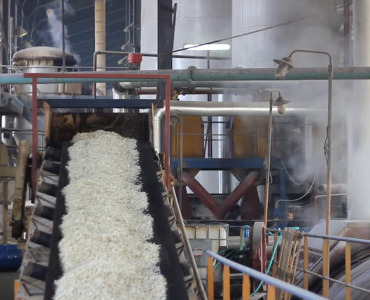Leading Cane Sugar Processing Chemicals: Improve Your Production
Leading Cane Sugar Processing Chemicals: Improve Your Production
Blog Article
Maximizar Rendimientos Y Minimizar Costos: Estrategias Avanzadas Para La Optimización Química Del Procesamiento De Azúcar De Caña
In the realm of cane sugar handling, the quest of making the most of returns while concurrently reducing prices stands as a powerful difficulty that needs a strategic mix of sophisticated chemical optimization techniques. Among this complex web of strategies exists the promise of opening untapped potential and changing the really significance of sugar manufacturing.
Chemical Analysis for Effectiveness
Chemical analysis plays a critical role in enhancing the performance of sugar cane handling by providing vital insights right into the make-up and residential properties of the raw products. By conducting thorough chemical evaluations on sugar cane examples, processors can determine the specific concentrations of sucrose, glucose, fructose, and various other components existing in the raw product. This details is vital for maximizing the numerous phases of the sugar walking cane processing chain, from grating to condensation.
Additionally, chemical evaluation allows processors to determine contaminations such as natural acids, proteins, and minerals that can affect the top quality and yield of the final sugar product. By evaluating these impurities, cpus can carry out targeted approaches to get rid of or reduce their results, eventually improving the general effectiveness of the processing plant.
Additionally, chemical evaluation assists in the monitoring of procedure specifications such as pH, temperature, and thickness, enabling cpus to make real-time changes to guarantee optimum conditions for sugar removal and formation. Overall, an extensive understanding of the chemical composition of sugar walking stick is necessary for making the most of returns, reducing expenses, and keeping high product high quality in the sugar production industry.

Enzyme Utilization for Boosted Yields
With a calculated technique to enzyme use, sugar walking stick cpus can significantly improve their returns while maintaining operational effectiveness in the manufacturing procedure. Enzymes play a critical duty in sugar walking stick processing by damaging down complex carbohydrates into less complex sugars, therefore raising the total sugar removal performance. By incorporating specific enzymes customized to target the various components of sugar cane, such as cellulose and hemicellulose, cpus can improve the launch of sugars throughout extraction.
Enzyme use provides the advantage of making the most of sugar yields from the raw product while reducing the power and sources needed for handling. This causes a more lasting and affordable production procedure. In addition, enzymes can assist in lowering handling time and boosting the general quality of the sugar product. With cautious option and application of enzymes, sugar walking cane processors can enhance their procedures to attain greater yields and success.
Ph Control for Ideal Handling
Enzyme use for boosted returns in sugar cane handling lays the foundation for addressing the vital aspect of pH control for optimum processing effectiveness. Keeping the proper pH degree throughout numerous phases of sugar walking cane processing is crucial for maximizing yields and decreasing costs. By very carefully monitoring and readjusting the pH degrees at various handling steps, sugar my sources walking stick cpus can improve sugar healing prices, reduce chemical use, and enhance the total production procedure.
Advanced Filtering Strategies
Executing innovative purification techniques in sugar cane handling enhances the performance and pureness of the last item via improved separation methods. By including sophisticated purification technologies, such as membrane filtering and activated carbon filtering, sugar walking cane handling plants can achieve higher levels of sugar recuperation and boosted quality control.

Turned on carbon purification is an additional advanced technique that assists in the removal of colorants, off-flavors, and residual pollutants from sugar walking stick products. By making use of triggered carbon's adsorption residential or commercial properties, this filtering method enhances the quality and preference of the sugar, meeting the high criteria required by consumers and market guidelines.
Energy-Efficient Distillation Techniques
Energy-efficient distillation methods are vital for enhancing the sugar walking stick processing industry's power usage while preserving high-quality product criteria. Conventional purification processes more can be energy-intensive, causing higher production costs and ecological influences (Cane Sugar Processing Chemicals). Executing energy-efficient purification methods, such as vacuum cleaner purification or molecular distillation, can considerably lower power requirements while improving general procedure performance
Vacuum distillation includes decreasing the stress within the distillation system, which lowers the boiling point of the liquid mix being processed. This decrease in boiling factor decreases the energy needed for evaporation, causing energy financial savings contrasted to traditional distillation techniques.
On the various other hand, molecular distillation utilizes brief course distillation strategies under high vacuum cleaner conditions to separate compounds based upon their molecular weight. This approach is particularly effective for heat-sensitive substances, as it operates at lower temperatures, minimizing power intake have a peek at this site and preserving item top quality.
Conclusion

Report this page